Historic Detroit: The Detroit News Building
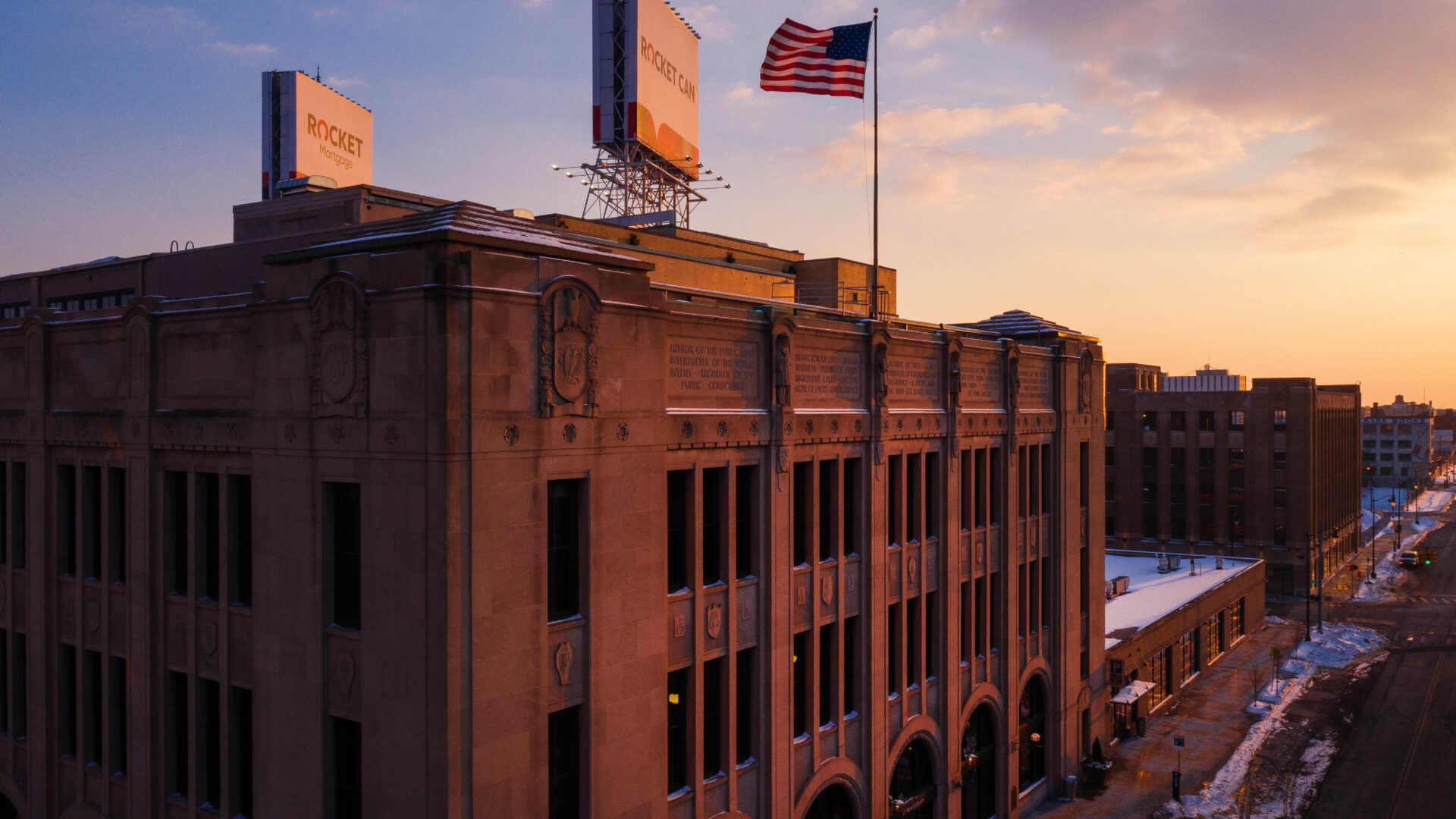 Read Below
Read Below
 Read Below
Read Below
The Detroit News Building on Lafayette Boulevard in Downtown Detroit. Photograph by Ryan Southen.
Historic Detroit: The Detroit News Building
As the weather softens and the itch to get outside becomes harder to ignore, we want to highlight some of our favorite historic architectural gems in Detroit that contribute to the iconic skyline, perfect for viewing on a walking tour of Detroit. We will dive into the architectural exterior and interior features that make these buildings unique and the story behind the buildings. Each is a unique book waiting to be opened and have its story told.
Many of the most beautiful and iconic historic buildings in Detroit were abandoned or demolished until what some call Detroit’s recent renaissance. Those that were able to be restored and saved have begun new lives in Detroit, and their historic architectural and interior features provide an opportunity to gain a revised perspective amongst a new generation.
One very important part to remember when discussing restoration of historic buildings, and especially one that is pursuing a national register listing, is the importance of respecting the integrity of the original design. New exterior or interior work completed must be in high contrast to the style of the existing work to preserve the historic integrity instead of attempting to “match or mimic” what was previously existing.
For instance, if a building had ionic fluted columns in the exterior and these were determined to be integral to the composition of the design, these cannot be re-created or replicated if new columns are needed. The new columns must provide a clear separation of stylistic tendency to represent the variation and importance of historic integrity.
We are excited to bring you the first in this series, highlighting the Detroit News Building.
The Detroit News Building’s Past
The Detroit News building, one of four in the Detroit News Complex, began construction in 1915 and finished in 1917. The well-known industrial architect, Albert Kahn, was commissioned to design this building. This building became a unique undertaking in Kahn’s career as it allotted him the opportunity to create an industrial use building while blending in architectural ornamentation that was unknown in industrial use buildings at that time. At that time in 1917, some thought it was the most modern and largest newsprint facility in the world with a price tag of two million dollars.
Built in an Art Deco style, Kahn described the building as “perhaps our most successful (industrial) structure.” The location, close to the financial and center business district of the city, served as an impressive structure of the prestigious newspaper industry, demonstrating several notable features that truly allow this building to stand out.
The original building remained in use until 2014.
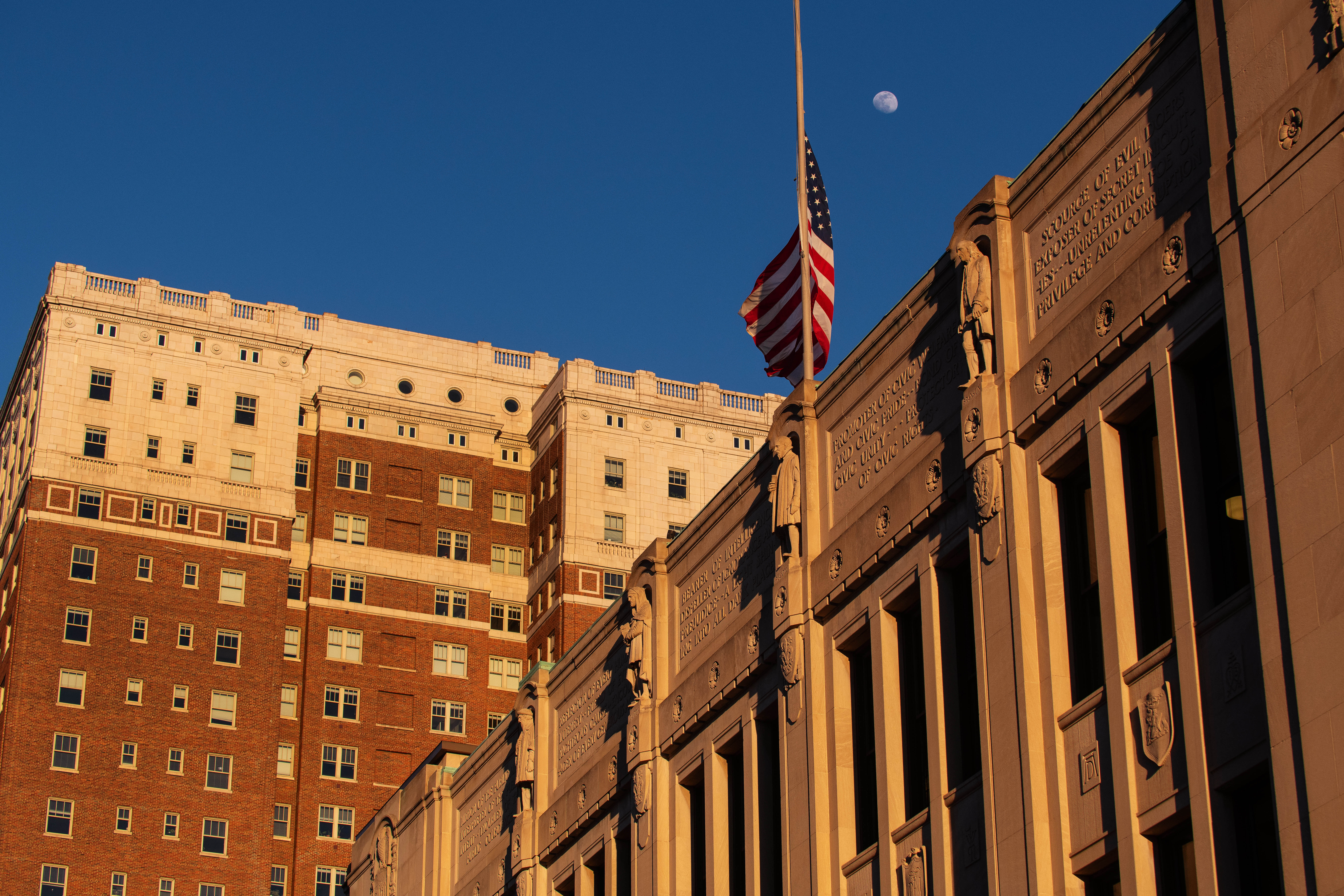
Notable Unique Exterior Architectural Details
Five friezes (horizontal bands containing sculptural ornamentation) exist on the Lafayette Boulevard façade flanking four historic notable figures. The friezes are framed below by rosettes, an ornamentation that is carried throughout the interior of the space as well. The historic figures and friezes were created to depict the ethical and service-oriented role the newspaper has to the public.
The historic figures are:
– Johannes Gutenberg, inventor of moveable type
– William Caxton, who is noted for bringing the printing press to England
– Christophe Plantin, a well-known French artist and painter
– Benjamin Franklin, creator of the Pennsylvania Gazette and Poor Richards Almanac
The friezes read:
– Mirror of the public mind
– Interpreter of the public intent // Troubler of the public conscience
– Reflector of every human interest // Friend of every righteous cause // Encourager of every generous act
– Bearer of intelligence // Dispeller of ignorance and prejudice // A light shining into all dark places
– Promoter of civic welfare and civic pride // Bond of civic unity // Protector of civil rights. Scourge of evil doers. Exposer of secret iniquities // Unrelenting foe of privilege and corruption
The friezes metaphorically represent the journey and evolution of print and written word and their importance in the industrial revolution. Sconces encasing globes line the exterior on the Northern Second Avenue façade; another ornamental detail that is seen through the interior. These sconces were favored fondly by the community as providing a sense of guiding light for the pedestrian. The two billboards atop the building were original and had to remain for the building to achieve its National Register status because they played a role in the story of the building and were deemed integral to the historic fabric of the exterior. The Detroit Free Press and the Detroit News each had ownership over a billboard while they comically shared the same building but ran separate newspapers.

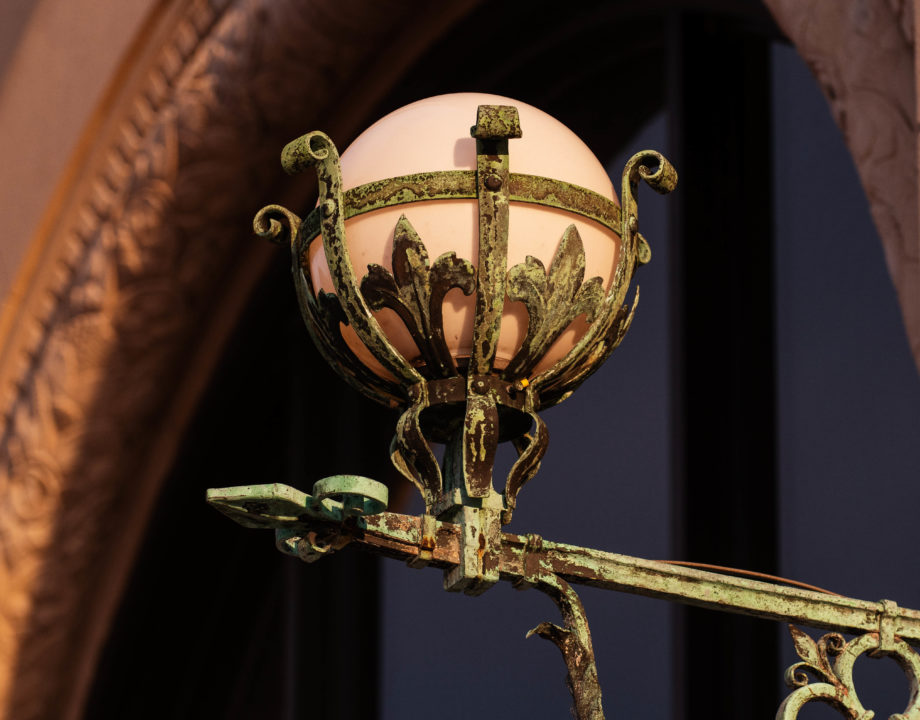
Notable Unique Interior Details
Much of the lobby’s historic architectural features were destroyed in renovation and demolition, however not all was lost. The floor remains a gray Knoxville marble. The walls are lined with Indiana limestone, the same material used on the exterior of the building. The interior design called back to the architectural exterior details including the representation of medieval ornamentation. Originally a large glass globe illuminated the lobby which represented the medieval world. A hand-hammered metal globe now lives in its absence, shown in the picture below.
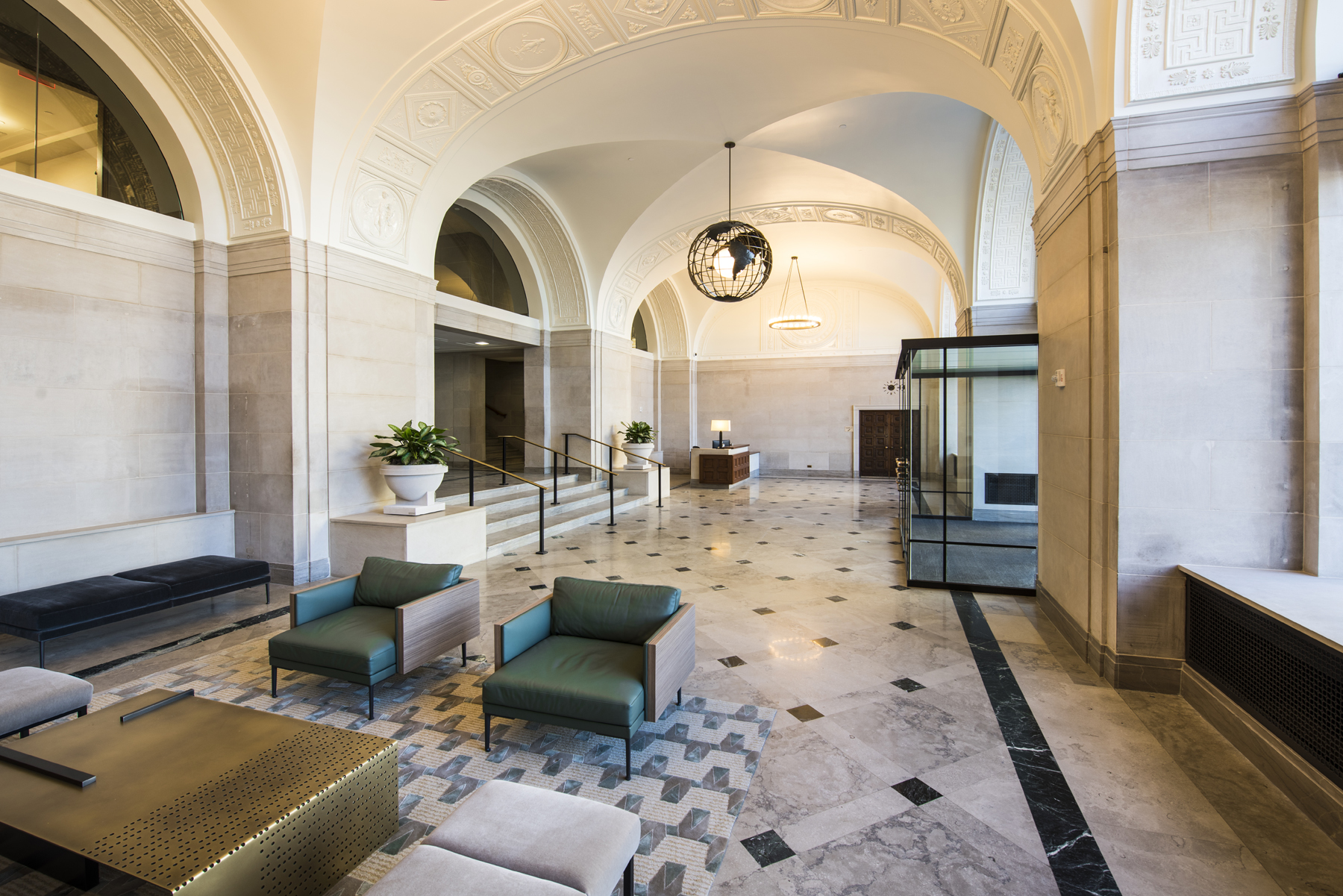
Some of the most notable remaining features exist in the library and the former executive offices. The George B Caitlin library was used for fact-checking the newspaper, at one point holding 50,000 volumes at its capacity. The plaster ceilings throughout the library are barrel-vaulted. The oak used for the doors contains elaborate carvings using rosettes and acanthus leaves, reminiscent of the medieval style used on the exterior of the building. Leaded glass windows provide ambient light in the space.
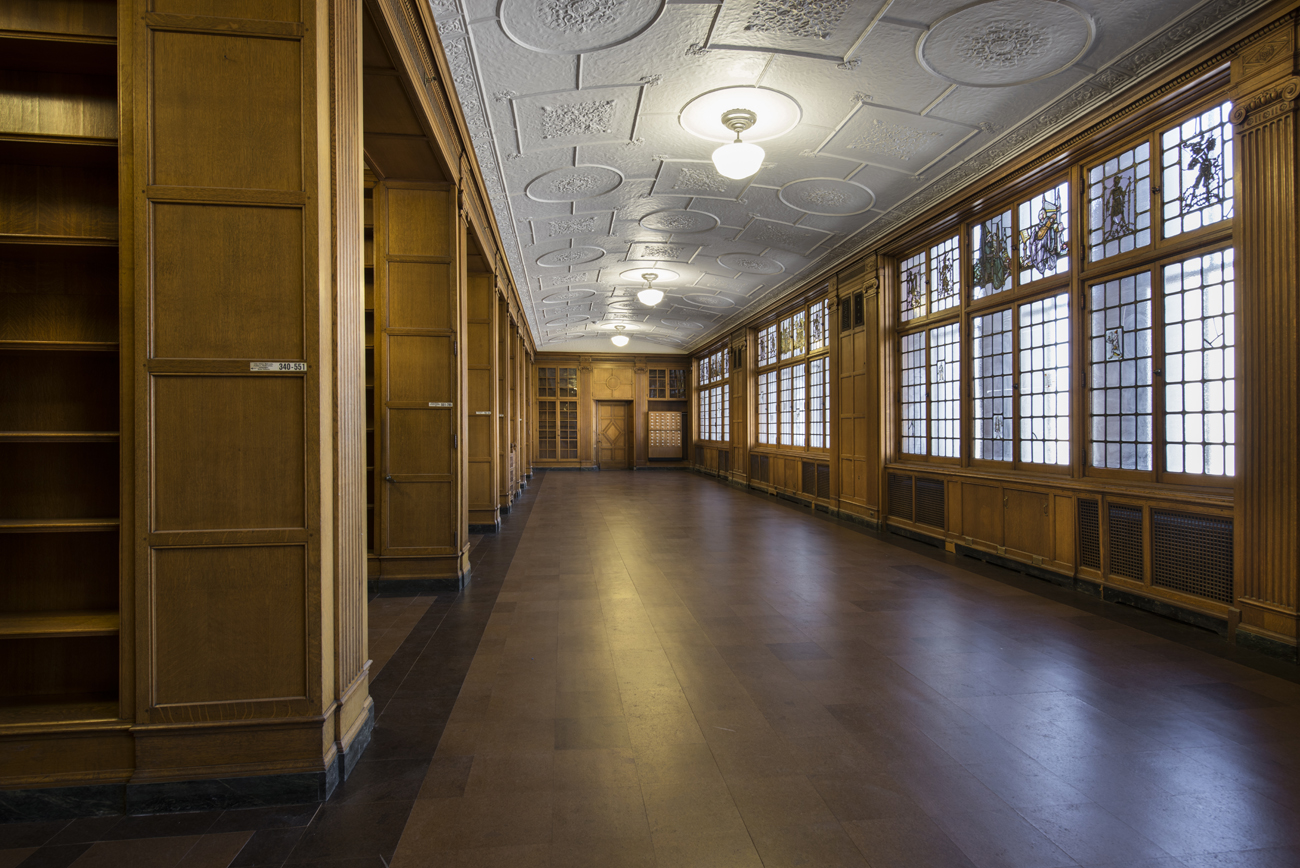
Interior Refresh
Bedrock acquired the building in 2014. When Pophouse was asked by Bedrock to revitalize the space for its new tenants, several hurdles were discovered. The first, understanding how to design the space and allow its original design language to remain at the forefront. The new design needed to complement the extraordinary architectural ornamentation and features. It was important for the history of the building to be represented and not hidden.
The Elizabethan woodwork that remained in the executive offices and library was restored. The color scheme calls back to an infamous joke, “what’s white and black and read all over? A newspaper.” Red was a staple color used in the original interiors, so implementing with black and white painted a backdrop for the building to become the focus.
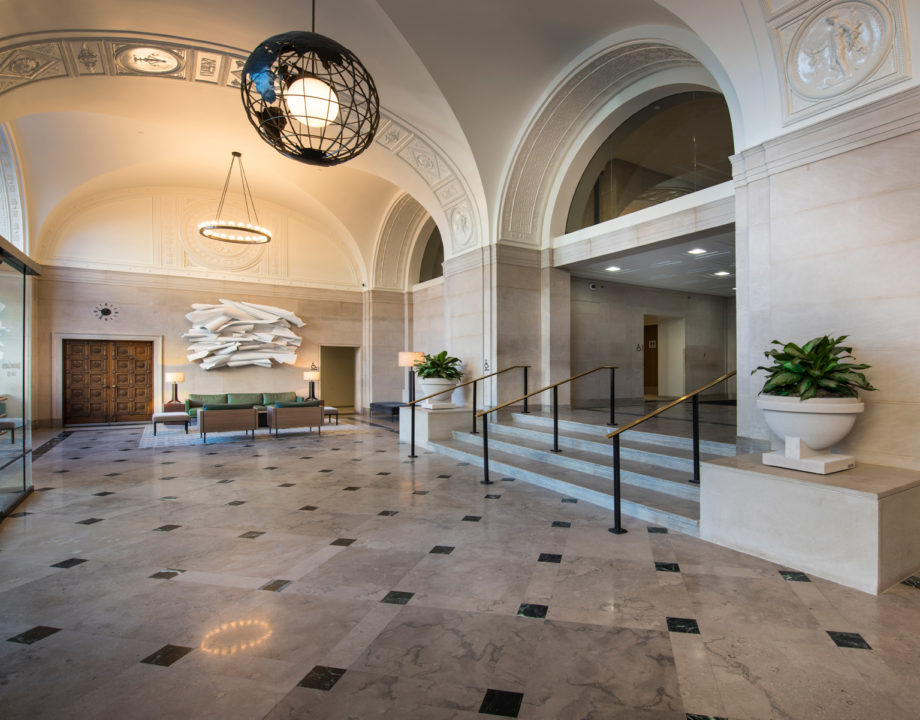
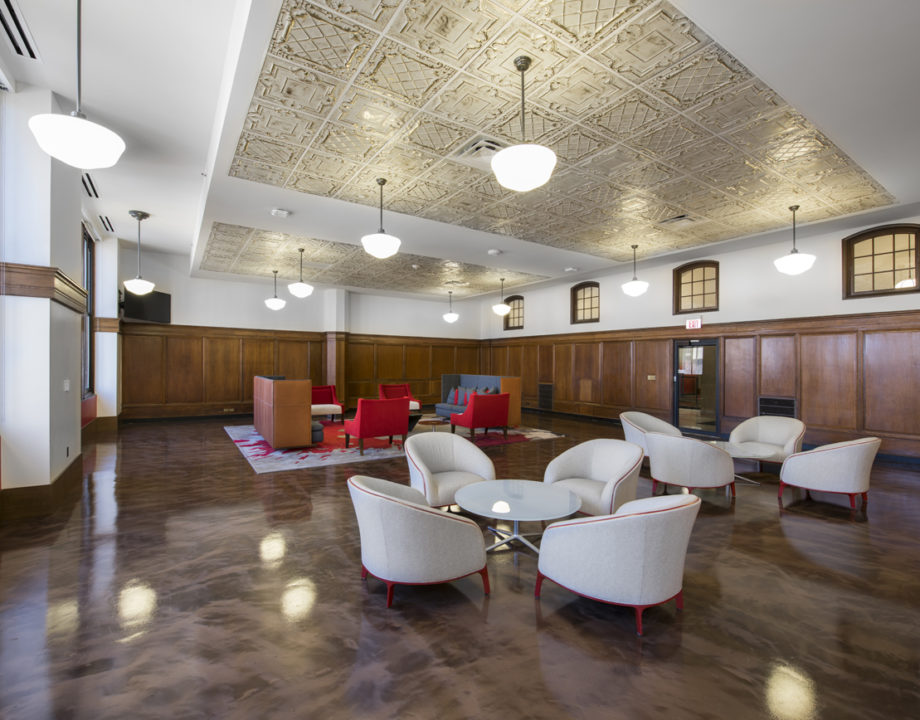
In the lobby, a sculptural piece by Detroit artist Leon Dickey mimics folding paper and nods back to the building’s rich history. In the dining areas a light fixture cascades the space and was designed to resemble a printing press. The light fixture has clips of news stories from the original Detroit Gazette prior to the 1950’s. Wallcovering that contains recycled newsprint is installed throughout the space. Detailed photographs and portraits of the team were displayed in high contrasting colors to resemble the newsprint quality of photos.
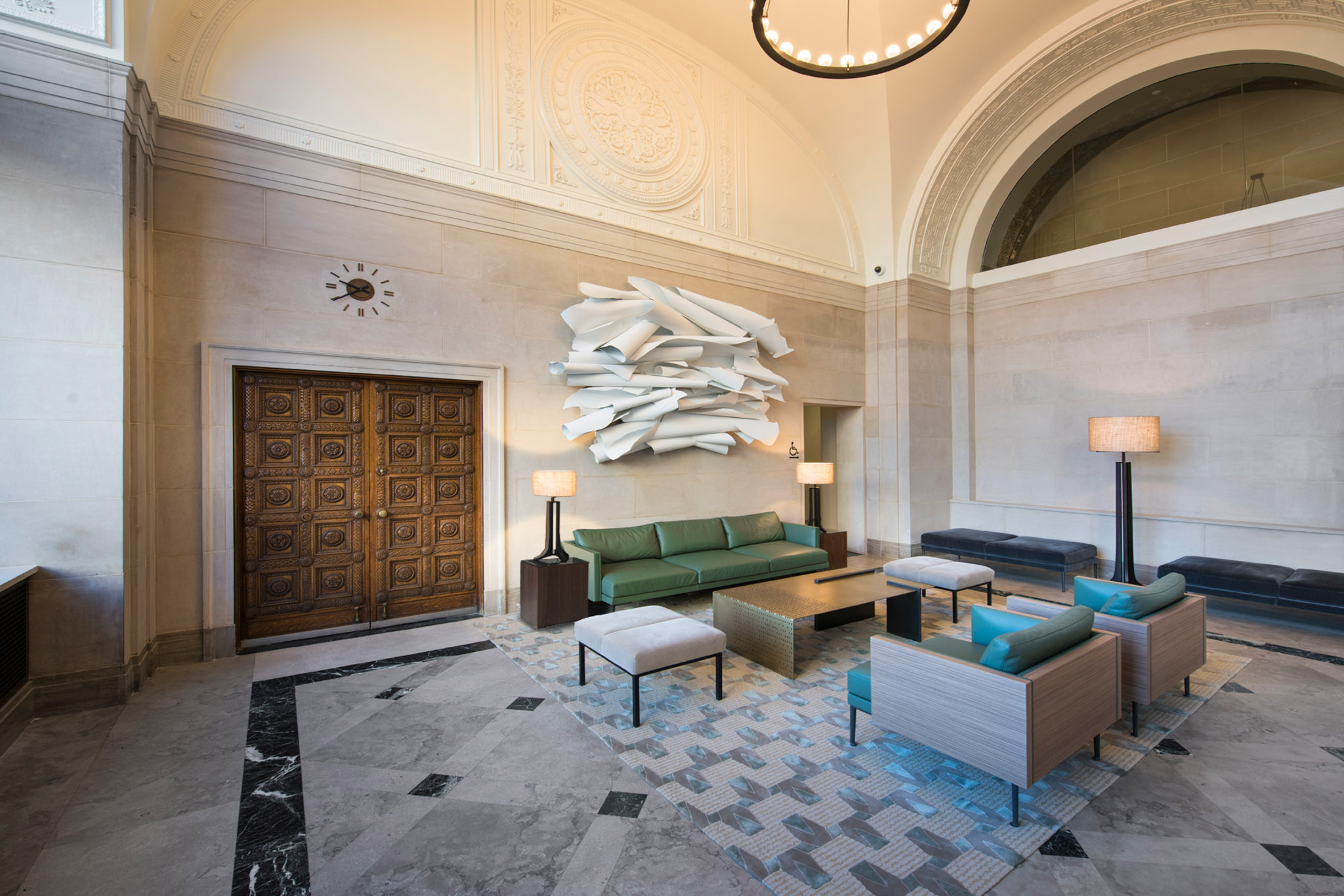
Pophouse utilized local artisans and suppliers for as much of the building’s work as possible to reinforce and re-engage the mission of the News to encourage the “bond of civic unity.” These minute details designed for the interior space allow the architectural details to be emphasized and supported while also providing a functional and aesthetically pleasing office environment.
When it was first constructed, the Detroit News Building embodied the excitement of the industrial revolution through technology and the goal of the renovation was to bring the excitement back to this space and the tenants that inhabit it. This was achieved by combining civic function, ornamentation, and architectural detail metaphorically, and sometimes literally, representing the civil services of those involved with delivering news to the community.
It is one of four in this complex of buildings used to support the Detroit News; and maintains a strong presence along Lafayette Boulevard and its façade is significant to the skyline of Detroit. This timeless building has found a new life and continues to be a landmark demonstrating the strength of Detroit’s past while existing as a beacon for modern work and the bright future of this great city.
Next Story
